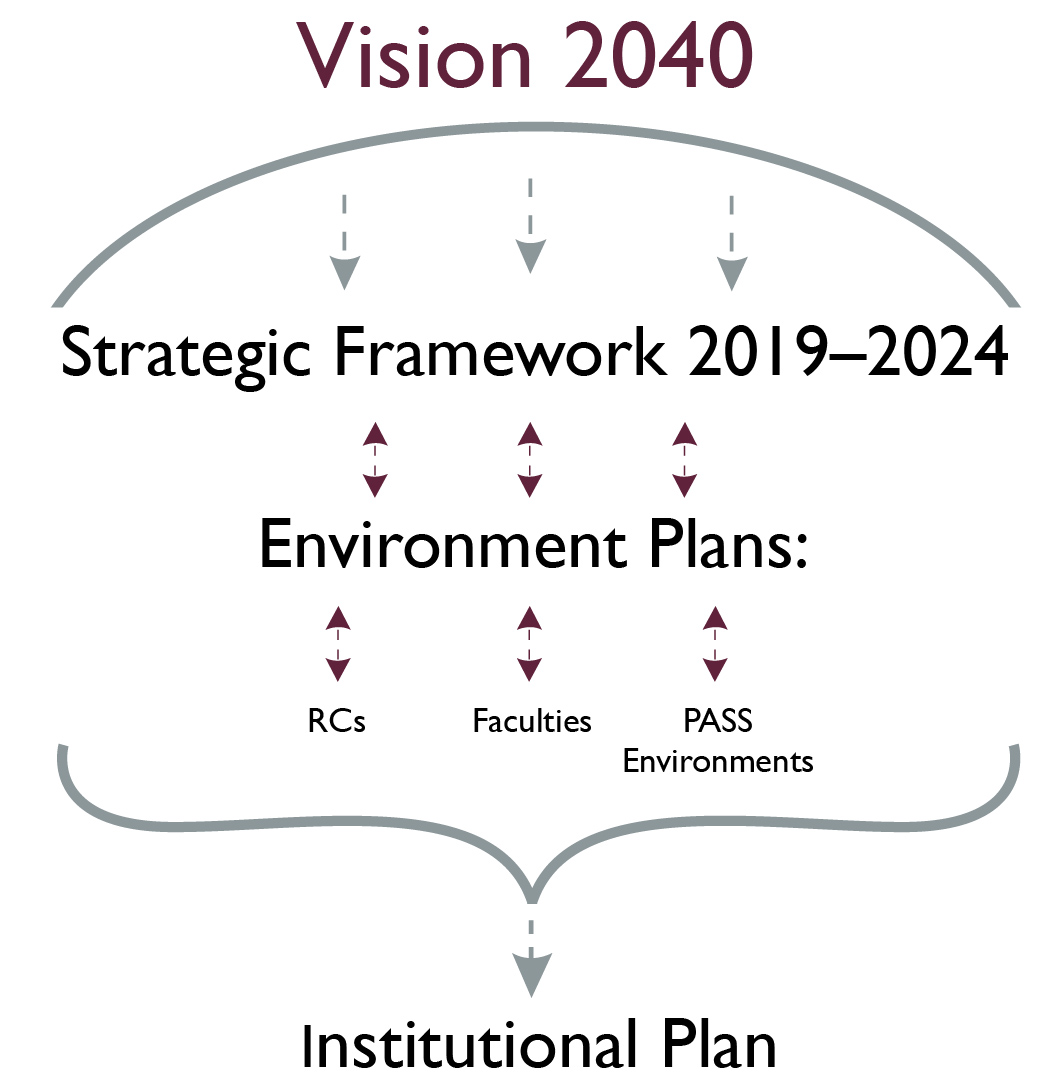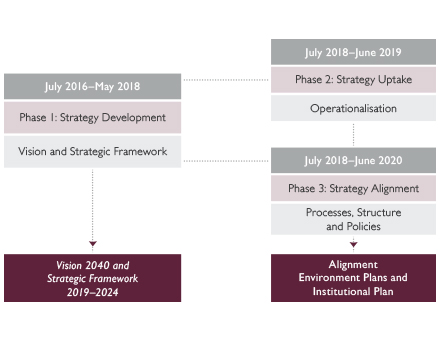SU Vision and Strategy Process
Since July 2016, Stellenbosch University has been busy with a process of reviewing its vision and strategy. This review acknowledges that universities do not remain static, but changes over time and also plays a role as a change agent in society. More so given the changes in the South African and global higher education landscape.
On the one hand, the vision and strategy should be comprehensive enough to provide a stable platform on which we can build the University for a period of time. On the other hand, it should be flexible enough to allow the institution to adapt and change along with trends – locally, regionally and globally.
Documents in context
The vision and strategy do not exist in isolation, but in context with other planning and implementation documents.
SU's vision indicates the type of organisation SU aims to become and what distinguishes us from other universities. It therefore provides a futuristic perspective. The new vision is Vision 2040. The previous vision was contained in Vision 2030.
SU's strategic framework has a shorter time span and defines the framework in which SU aligns its activities for a specific period. The new strategy is the Strategic Framework 2019–2024. The previous one was known as the Institutional Intent and Strategy 2013–2018 (ISS), while the strategy that preceded it was known as A Strategic Framework for the Turn of the Century and Beyond.
The Institutional Plan (IP) comprises the plans of each environment within SU for a six-year period, including the environment plans of the responsibility centres (RCs) and faculties. The RC environment plans include the professional and administrative support services. The plans are reviewed and updated annually and submitted to the Department of Higher Education and Training by 15 December. |  |
As the IIS draws to a close in 2018, a process for the development of the new strategy commenced in July 2016 under the leadership of Prof Hester Klopper, Deputy Vice Chancellor: Strategy and Internationalisation. As the strategy is the operationalisation of a vision, the vision (where we see ourselves in a specific timeframe) was revised at the same time.
Phases of the overarching strategy process
The overarching strategy process is structured in three phases.
During the first phase (Strategy Development – July 2016 to May 2018),
the new vision was compiled, as well as the strategic framework that
defines the core strategic themes, plus the institutional goals for
every strategic theme. It is also during this phase that the values of
the university was reviewed. Phase two follows after the SU Council has approved the new vision, Vision 2040, and the Strategic Framework 2019–2024 on 18 June 2018. During this phase (Strategy Uptake – July 2018 to June 2019) the
core strategic themes and goals are operationalised by defining
context-specific objectives. This implies interaction with faculties and
other environments in order to create alignment between the strategic
framework and environment plans. Phase three (Strategy Alignment – July 2018 to June 2020) overlaps
with this – to close the gap between the planning and formulation of
strategy and the execution of the strategy by means of the alignment of
structures and processes. It therefore entails a new approach of
integrated planning and execution to ensure an agile and adaptable
organisation where monitoring and evaluation is a continuous process. |  |
This website briefly explains the milestones that have already been reached, as well as the next steps that are envisaged.

